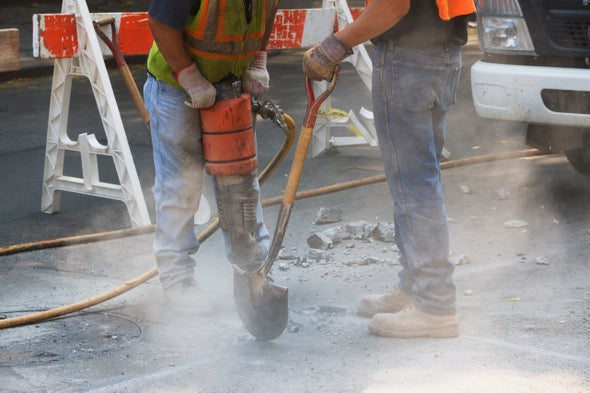(单词翻译:单击)
听力文本
This is Scientific American's 60-second Science, I'm Jim Daley.
(Street noise)
No wonder they call New York the city that never sleeps. In fact, noise is one of the biggest civic complaints made by denizens of the Big Apple. Now, a project that uses citizen science and artificial intelligence, A.I., is trying to help. Called Sounds of New York City, or SONYC, the effort combines a network of sensors that constantly monitor ambient noise, along with machine learning and human volunteers.
"The SONYC project has two main goals: we want to advance the science and engineering of machine listening, and we want to help monitor and mitigate noise pollution in urban areas."
Oded Nov, a professor of Technology Management and Innovation at NYU's Tandon School of Engineering.
"Over the past two years, our sensors collected huge amounts of urban sound data. And we need volunteers to label these sounds."

That's where citizen science comes in: SONYC needs members of the public to listen to ambient sounds picked up by noise monitors and label the sounds so the computers can learn to independently recognize them.
"Labeling sound is harder than labeling images because sound is invisible and ephemeral."
But once people label sounds and enter them into a computer, the machines have an easier time telling, say, a jackhammer from an idling truck.
"Anyone with a computer or a smartphone can participate in this research project. Search for SONYC NYU, and start labeling short sound recordings online. The more labeled examples we give our computers, the better they become at recognizing sounds."
The information could help inform city agencies about where they should try to cut the noise most. With a little help from citizen scientists, SONYC just might be able to let the city that doesn't sleep finally get a little shuteye.
Thanks for listening for Scientific American — 60-Second Science. I'm Jim Daley.
参考译文
这里是科学美国人——60秒科学系列,我是吉姆·戴利。
(街头噪音)
难怪人们称纽约是“不眠之城”。事实上,噪音是纽约居民最大的市民抱怨之一。现在,一个使用公民科学和人工智能的项目正在试图提供帮助。该项目名为“纽约市之声”(简称SONYC),将持续监测周围环境噪音的传感器网络与机器学习和人类志愿者相结合。
“‘纽约市之声'项目有两个主要目标:我们希望推进机器监听的科学和工程发展,希望帮助监测并减轻城区的噪音污染。”
纽约大学坦顿工程学院的技术管理和创新教授向迪德·诺夫说到。
“在过去两年中,我们的传感器收集了大量的城市声音数据。我们需要志愿者标注这些声音。”
这就是公民科学发挥作用的地方:“纽约市之声”需要公众聆听噪音监测器捕捉到的环境音,并对这些声音进行标记,以使计算机可以学会独立识别它们。
“标记声音比标注图像更难,因为声音是无形而且短暂的。”
但一旦人们给声音进行标注并将其输入电脑,机器就能更容易地分辨出声音,比如一辆空转卡车上的手提钻的声音。
“任何有电脑或智能手机的人都可以参加这个研究项目。搜索‘纽约市之声',开始在线标注短声音。我们给电脑标注的声音样本越多,它们识别声音的能力就越强。”
这些信息可以帮助城市机构了解他们最应该减少哪些地方的噪音。在公民科学家提供的一点帮助下,“纽约市之声”或许能让这个“不眠之城”稍微睡一会儿。
谢谢大家收听科学美国人——60秒科学。我是吉姆·戴利。
译文为可可英语翻译,未经授权请勿转载!
重点讲解
重点讲解:
1. no wonder 难怪;怪不得;不足为怪;
No wonder my brother wasn't feeling well.
难怪我兄弟感觉不舒服了。
2. come in (在某件事中)起作用,发挥作用;
Rose asked again, 'But where do we come in, Henry?'
罗丝又问:“但是需要我们干什么,亨利?”
3. pick up 发现,找到,识别;
In these periods of darkness, undetectable to the human eye, sensors are able to pick up light coming from outside the device.
人眼无法觉察这些黑暗的间隙,但是光学传感器却可以捕捉从外界透射进来的光线。
4. participate in 参与;参加;
They expected him to participate in the ceremony.
他们希望他参加典礼。


